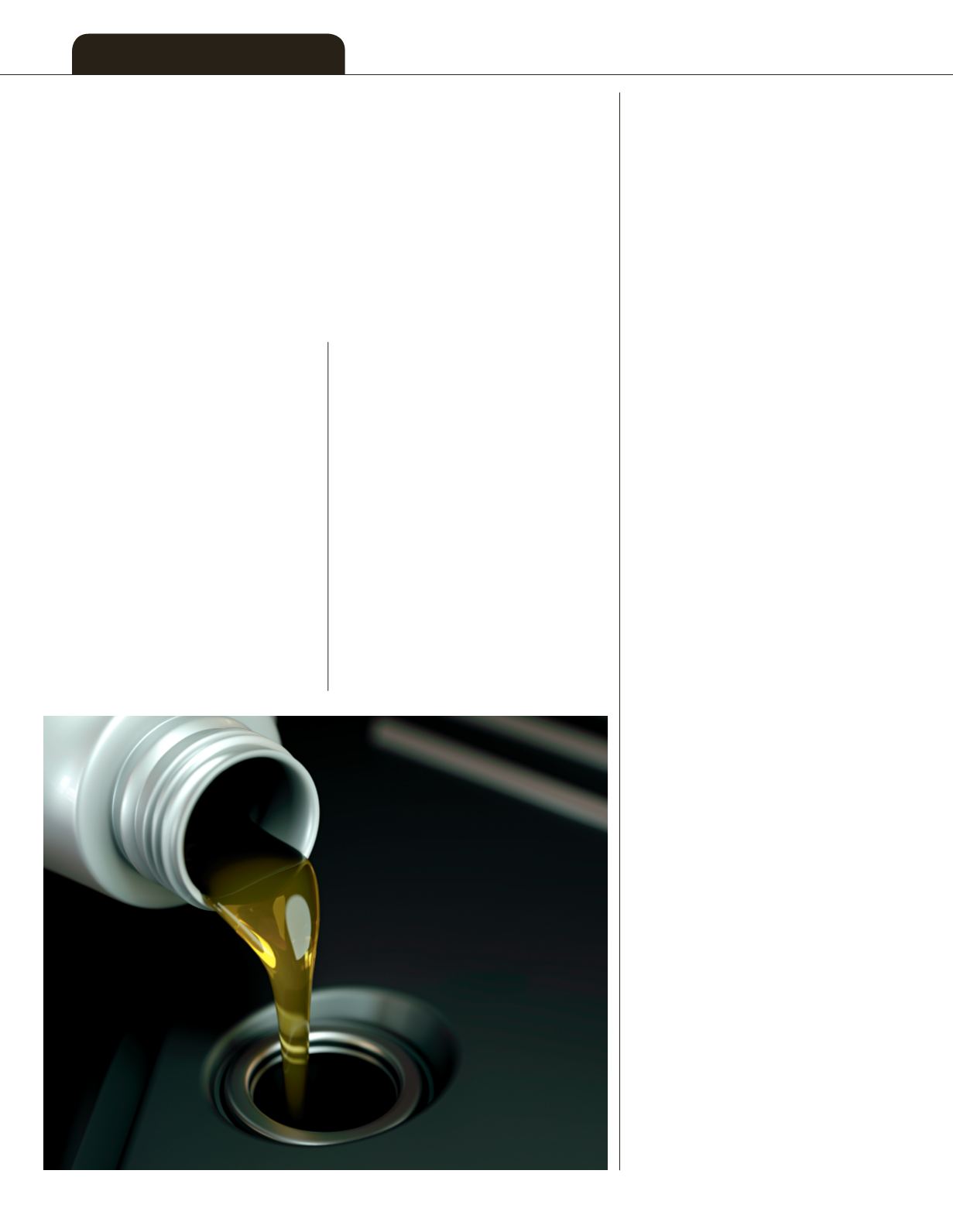
FUELS & LUBES INTERNATIONAL
Quarter Four 2014
6
“Some of the tests are not coming
along as fast as we had hoped,” said Robert
Stockwell, a GM engine oil technical specialist.
Stockwell helps manage the development of the
new tests, a process that is difficult to pin down
to a schedule, he said. “The trouble with test
development is you’re not done until you’re done.
And you don’t know what you don’t know.”
As of mid-2014, dexos1, which covers
gasoline engine oils, looks to be on track for
a 2016 factory fill. The dexos2 specification is
applicable to light-duty diesel engines globally
and service fill of gasoline engines in Europe,
Turkey, Russia and a few adjoining countries.
It may be delayed up to a year due to the status
of the diesel-specific tests.
There are five main drivers for the
development of the next-generation
specification, according to GM documents.
First, the engines on which some old tests are
based are obsolete and difficult to obtain. The
second reason is the need for lubricants to do
their part in directly improving fuel economy.
The third driver is the need to support
vehicle changes that increase fuel economy.
The fourth and fifth reasons have to do with
turbocharging—the new lubricants needing
to minimise pre-ignition events and to offer
better control of turbo deposits.
“While just fuel economy improvements
from oil may only be a few tenths of a percent,
engine oil as an enabler to other fuel economy
improvements can be huge, such as turbo-
charged engines,” Stockwell said.
What this means is that GM has had to
develop three new tests: one for detecting
pre-ignition events, a second to uncover turbo
deposits and a third to look at air entrained in
the lubricant. The tests covering these areas
are all in fairly good shape with candidate
turbo deposit tests running for a year or so and
the other two tests now becoming available,
according to Stockwell.
What’s more, the tests can clearly
distinguish between good and poor oils. For
instance, the best commercially available
formulation has no low-speed pre-ignition
events, unwanted combustion at low speed
and high torque that can lead to catastrophic
knocking. In contrast, the poorest oil can yield
50 events when tested. A 5W-30 factory fill oil
comes in somewhere between the two with
perhaps five events during testing.
There can still be improvements in these
tests. For example, the turbo deposit test runs
for hundreds of hours with the worst oil lasting
for just over 500 hours of testing and the best
oil still running with boost when the test was
stopped at 825 hours. That is a long test for
passenger car engine oils, and GM is seeking
ways to shorten it. At present, though, no
shortcut exists, and there may never be one,
Stockwell said.
Another group of tests needs more work
to be ready by year’s end. The reasons for
this vary. In the case of the oxidation and
deposit test, one issue is that measurements
done at two independent testing labs tend to
be systematically different. That is, one lab
consistently comes in as more severe than the
other. Why this happens is currently unknown
and is the subject of investigation.
The fuel economy tests also still need work.
The GM program has just kicked off. The test
matrix is running on a trio of engines, some
turbocharged and some not, from the 2013 and
2014 model year. GM plans to incorporate the
ILSAC fuel economy test, the Sequence VIE, as
part of the dexos spec. It is the sponsor of the
VIE, which uses one of the company’s engines
as the testing platform.
The fuel economy test highlights the
fact that the dexos specification requires
By Hank Hogan
d
exos
Next-generation
tests
General Motors hopes its propri-
etary oil specification, dexos®, will
soon have a sequel. If the result is
successful, it could greatly benefit
the lubricant industry. The old
specification has hundreds of li-
censees, and the new specification
will expand state-of-the-art perfor-
mance, especially in regards to fuel
economy. GM’s plan was to start
factory fill for 2016 production,
which would begin in Q3 2015. In
rolling out the new oil specification,
tests that define which oils pass
the specification have to be devel-
oped and documentation for the
specification has to be released.
However, the first part of that se-
quence has run into problems.
au t omo t i v e co l umn


